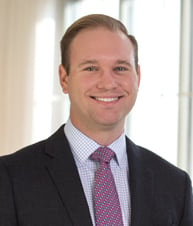Wisconsin Alumni Research Foundation v. Apple Inc., Nos. 2022-1884, -1886 (Fed. Cir. (W.D. Wis.) Aug. 28, 2024). Opinion by Prost, joined by Taranto and Chen.
Wisconsin Alumni Research Foundation (WARF) sued Apple for infringement of a patent directed to a predictor circuit for advanced execution of instructions. In a first lawsuit (WARF I), WARF accused Apple’s A7 and A8 processors of infringement. Later, WARF filed a second lawsuit (WARF II) accusing Apple’s A9 and A10 processors of infringing the same patent.
Prior to trial in the first lawsuit, WARF affirmatively abandoned its doctrine-of-equivalents theory of infringement. A jury then found that Apple literally infringed, but in an eventual appeal the Federal Circuit changed the claim construction and remanded.
On remand, WARF requested a new trial on infringement under the doctrine of equivalents. The district court denied the request because WARF had abandoned its doctrine-of-equivalents theory and, in any event, the theory was precluded as a matter of law because it would vitiate the meaning of the claim term given by the Federal Circuit. WARF also sought to present a doctrine-of-equivalents theory in WARF II, but the district court held that the claims in WARF II were barred by the judgment in WARF I. WARF then appealed the final judgments in both cases.
The Federal Circuit consolidated the two appeals and affirmed. Regarding WARF I, the Federal Circuit agreed that WARF had waived its doctrine-of-equivalents theory. The court concluded that “no change in the claim construction excused WARF’s failure to present its doctrine-of-equivalents theory to the jury in WARF I,” and that, “in fact, WARF affirmatively abandoned that theory for strategic purposes unrelated to claim construction.”
Regarding WARF II, the Federal Circuit agreed that WARF I precluded the doctrine-of-equivalents theory in WARF II based on both issue preclusion and the Kessler doctrine. As to issue preclusion, the Federal Circuit saw no clear error in the district court’s finding that the pertinent parts of the A7 and A8 processors (at issue in WARF I) were essentially the same as those in the A9 and A10 processors (at issue in WARF II). WARF argued that different theories of infringement were at issue, thus foreclosing issue preclusion, which requires the issue in the first action to be “identical” to the issue in the second action. WARF then argued that literal infringement and infringement under the doctrine of equivalents have different tests, and thus are different issues. The Federal Circuit disagreed because “there is only one statute governing patent infringement.” Summarizing precedent, the Federal Circuit was “convinced that literal infringement and the doctrine of equivalents are the same issue for issue-preclusion purposes.”
The Federal Circuit also ruled that the Kessler doctrine barred WARF’s second lawsuit against essentially the same products. WARF argued that Kessler does not apply because the A9 and A10 processors were sold before any final judgment of noninfringement in WARF I, but the Federal Circuit held that the argument “fails” under established precedent.

